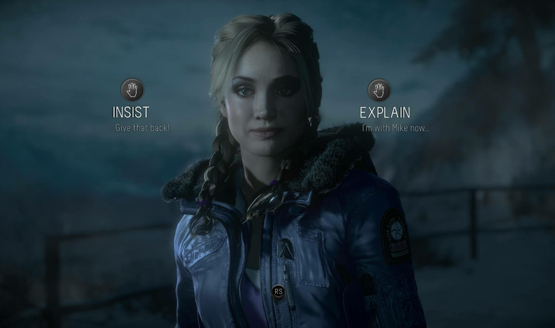Taking over four years for Supermassive Games to create, Until Dawn was a huge project that went through vast changes during development, ultimately becoming a next-gen horror title which set a new benchmark for the genre. Speaking to Kotaku, Creative Director Will Byles recounted his experience of making the game, starting at the beginning.
Until Dawn began as a PlayStation Move title, with the motion controller being a mandatory requirement. Byles explained, “Supermassive had this game it had been talking about for a while, which was a Move-controlled first-person torch-based [game].”
The response to the live demo during gamescom 2012 helped Until Dawn evolve into something more than just a Move title, as despite the “huge response” being positive, there was a lot of feedback from those wanting to play the game without the required Move peripheral. Supermassive then “sat down with Sony again,” deciding to go with the standard control pad instead.
The transition from first-person to third-person is also explained by Byles:
When you have a flashlight, and a first-person camera, the lighting you’re using is a direct light from your lens, from your view. So you’d have this slightly rabbit-in-headlights feel when you looked at other people. But the second you got a camera outside of first-person [perspective], it suddenly looked awesome.
With Sony accepting these changes with enthusiasm, and with Until Dawn going on to target the PlayStation 4 instead of the PlayStation 3, the developers had a lot more power to play with. Precise performance capture was one of the new tools embraced by Supermassive, allowing a “really accurate representation” of the actors to be captured and manipulated.
Visually, Until Dawn is a beautiful game, but it is also dark. Mastering darkness is a tricky thing to do, as Byles goes on to explain:
The dark is a really important thing in horror, obviously, because you don’t know what’s in there. And with games, it’s really hard to do dark. Which sounds mad, but it really is, because traditionally you have a bake, where all the lights for an entire scene are effectively baked into the texture, and then the lights [for darker areas] are taken away, because it’s just too [computationally] expensive. The game wouldn’t run.
Discussing the various static camera shots, as well as cool angles found mostly during action sequences, Byles talks about one of his faves:
One of my favourite shots is when Sam’s being chased by the psycho, and she pushes through that door that breaks, and there’s a reverse shot that dollies all the way down a really long corridor. Oh my god!
Until Dawn had quite the roller coaster ride during development, but we’re happy to have experienced its release and the horror contained within. If you missed our review last year, here it is for your reading pleasure!
[Source: Kotaku]





